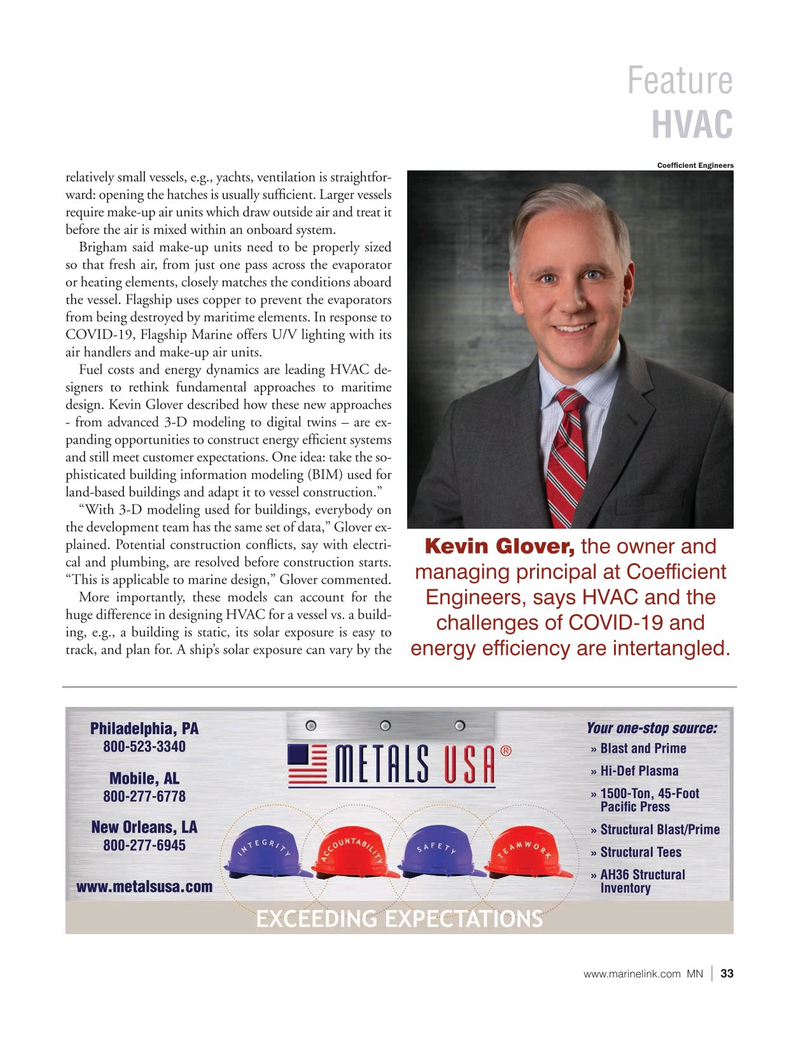
Page 33: of Marine News Magazine (September 2021)
Shipbuilding & Repair
Read this page in Pdf, Flash or Html5 edition of September 2021 Marine News Magazine
Feature
HVAC
Coef? cient Engineers relatively small vessels, e.g., yachts, ventilation is straightfor- ward: opening the hatches is usually suf? cient. Larger vessels require make-up air units which draw outside air and treat it before the air is mixed within an onboard system.
Brigham said make-up units need to be properly sized so that fresh air, from just one pass across the evaporator or heating elements, closely matches the conditions aboard the vessel. Flagship uses copper to prevent the evaporators from being destroyed by maritime elements. In response to
COVID-19, Flagship Marine offers U/V lighting with its air handlers and make-up air units.
Fuel costs and energy dynamics are leading HVAC de- signers to rethink fundamental approaches to maritime design. Kevin Glover described how these new approaches - from advanced 3-D modeling to digital twins – are ex- panding opportunities to construct energy ef? cient systems and still meet customer expectations. One idea: take the so- phisticated building information modeling (BIM) used for land-based buildings and adapt it to vessel construction.” “With 3-D modeling used for buildings, everybody on the development team has the same set of data,” Glover ex- plained. Potential construction con? icts, say with electri-
Kevin Glover, the owner and cal and plumbing, are resolved before construction starts. managing principal at Coef? cient “This is applicable to marine design,” Glover commented.
More importantly, these models can account for the
Engineers, says HVAC and the huge difference in designing HVAC for a vessel vs. a build- challenges of COVID-19 and ing, e.g., a building is static, its solar exposure is easy to track, and plan for. A ship’s solar exposure can vary by the energy ef? ciency are intertangled. www.marinelink.com MN 33|

 32
32

 34
34
